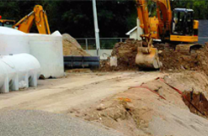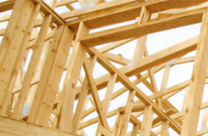Posted Thu, 07/05/2012 - 12:18 by Trevor P. McEwen
How to properly install ceramic floor tiles is a question that I have been asked on many occasions. There have been numerous methods practiced by tile installers over the years and they can vary widely depending on the construction of the building. The most important thing to consider when installing a ceramic tile floor is the construction of the floor and the deflection the floor will sustain during use.
Unlike vinyl tiles, which are flexible and can bend with a deflecting floor, ceramic tiles are rigid and will come free or crack if the subfloor flexes too greatly. To account for differential movement between a tile and its subfloor, the Romans used sand as a sub-base. Although the ground can shift over time, the sand base proctects the tile by absorbing the movement.
Consider a modern house constructed in Canada: the owner has installed a beautiful tile floor in their spacious kitchen and that tile floor has lasted 10 years with no problems. The day after a large party, the home owners find that some of their kitchen tiles have cracked and/or come free from the floor. The reason for this is that a residential floor designed in accordance with the National Building Code is designed to deflect up to 1/360 of the length the floor joists span. This means that a 30 foot long floor could safely deflect up to an inch under acceptable loading conditions - just like our unsuspecting home owners found out after their party.
A simple way to strengthen an existing floor and limit how much it will deflect under load is to install a second layer of subfloor (usually 1/2" plywood) on top of the existing subfloor. Some contractors may tell you that a thicker morter bed is the answer, but I have encountered floors with mortar bed one-inch-thick, complete with wire mesh, and the tiles still cracked as the floor moved.
Although the Romans have proven over time that sand is an excellent sub-base, it is not practical for modern tile installations. However, there is a plastic bubble sheeting on the market which was developed to provide the same absorption of floor movement as a layer of sand. Check with your local building supply outlet.
- Trevor P. McEwen's blog
- Login to post comments





